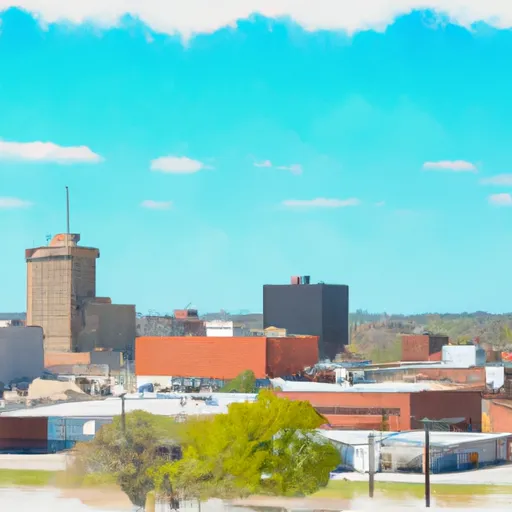-
 Snoflo Premium
Snoflo Premium
Get unlimited access to all our content
With no Ad interruptions! - Start Your Free Trial Login with existing account
Lawton
Eden Index
Climate
8.3
•
Recreation
4.0
•
Community
0.7
•
Safeguard
4.9/10

Lawton, Kansas is a vibrant city located in the southern part of the state. It experiences a humid subtropical climate characterized by hot summers and mild winters. Summers in Lawton are typically hot with temperatures reaching the mid-90s Fahrenheit, while winters are cooler with temperatures averaging in the mid-40s. The city also experiences moderate rainfall throughout the year.
Lawton benefits from several hydrology constituents, including the presence of the Cache Creek and Medicine Creek. These water bodies provide recreational opportunities for fishing, boating, and other water-based activities. In addition, Lawton is situated near the Wichita Mountains Wildlife Refuge, which offers stunning landscapes, hiking trails, and wildlife viewing. Outdoor enthusiasts can explore the refuge's scenic beauty, engage in camping, rock climbing, and birdwatching.
Overall, Lawton, Kansas, offers a diverse range of outdoor recreation opportunities amid its unique climate and hydrology constituents. Whether you enjoy water activities or exploring natural landscapes, Lawton provides ample opportunities to enjoy the great outdoors.
What is the Eden Index?
The Snoflo Eden Index serves as a comprehensive rating system for regions, evaluating their desirability through a holistic assessment of climate health, outdoor recreation opportunities, and natural disaster risk, acknowledging the profound impact of these factors on livability and well-being.
Climate Health Indicator (CHI): 8.3
Lawton receives approximately
1135mm of rain per year,
with humidity levels near 81%
and air temperatures averaging around
14°C.
Lawton has a plant hardyness factor of
6, meaning
plants and agriculture in this region thrive during a short period during spring and early summer. Most
plants will die off during the colder winter months.
By considering the ideal temperature range, reliable water supplies, clean air, and stable seasonal rain or snowpacks, the Climate Health Indicator (CHI) underscores the significance of a healthy climate as the foundation for quality living.
A healthy climate is paramount for ensuring a high quality of life and livability in a region, fostering both physical well-being and environmental harmony. This can be characterized by ideal temperatures, reliable access to water supplies, clean air, and consistent seasonal rain or snowpacks.
Weather Forecast
Streamflow Conditions
Neosho
Area Rivers
Neosho
Snowpack Depths
Neosho
Reservoir Storage Capacity
Neosho
Groundwater Levels
Recreational Opportunity Index (ROI): 4.0
The Recreational Opportunity Index (ROI) recognizes the value of outdoor recreational options, such as parks, hiking trails, camping sites, and fishing spots, while acknowledging that climate plays a pivotal role in ensuring the comfort and consistency of these experiences.
Access to outdoor recreational opportunities, encompassing activities such as parks, hiking, camping, and fishing, is crucial for overall well-being, and the climate plays a pivotal role in enabling and enhancing these experiences, ensuring that individuals can engage in nature-based activities comfortably and consistently.
Camping Areas
| Campground | Campsites | Reservations | Toilets | Showers | Elevation |
|---|---|---|---|---|---|
| Talimena State Park | None | 1,064 ft | |||
| Applegate Cove - Kerr Reservoir | None | 481 ft | |||
| Quarry Island - Lake Wister State Park | None | 523 ft | |||
| Cowlington Point - Kerr Reservoir | None | 480 ft | |||
| Victor Area - Lake Wister State Park | None | 506 ft | |||
| Billy Creek | 12 | 836 ft | |||
| Short Mountain Cove - Kerr Reservoir | None | 499 ft | |||
| Below the Dam - Lake Wister State Park | None | 462 ft | |||
| Winding Stair | 23 | 1,961 ft | |||
| Wards Landing - Lake Wister State Park | None | 519 ft |
Nearby Fishing
Catastrophe Safeguard Index (CSI):
The Catastrophe Safeguard Index (CSI) recognizes that natural disaster risk, encompassing floods, fires, hurricanes, and tornadoes, can drastically affect safety and the overall appeal of an area.
The level of natural disaster risk in a region significantly affects safety and the overall livability, with climate change amplifying these risks by potentially increasing the frequency and intensity of events like floods, fires, hurricanes, and tornadoes, thereby posing substantial challenges to community resilience and well-being.
Community Resilience Indicator (CRI): 0.7
The Community Resilience Indicator (CRI) recognizes that education, healthcare, and socioeconomics are crucial to the well-being of a region. The CRI acknowledges the profound impact of these elements on residents' overall quality of life. By evaluating educational resources, healthcare accessibility, and economic inclusivity, the index captures the essential aspects that contribute to a thriving community, fostering resident satisfaction, equity, and social cohesion.

